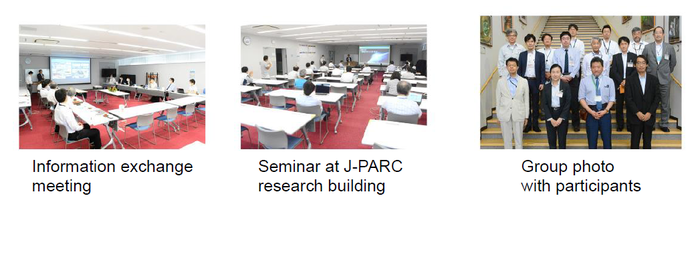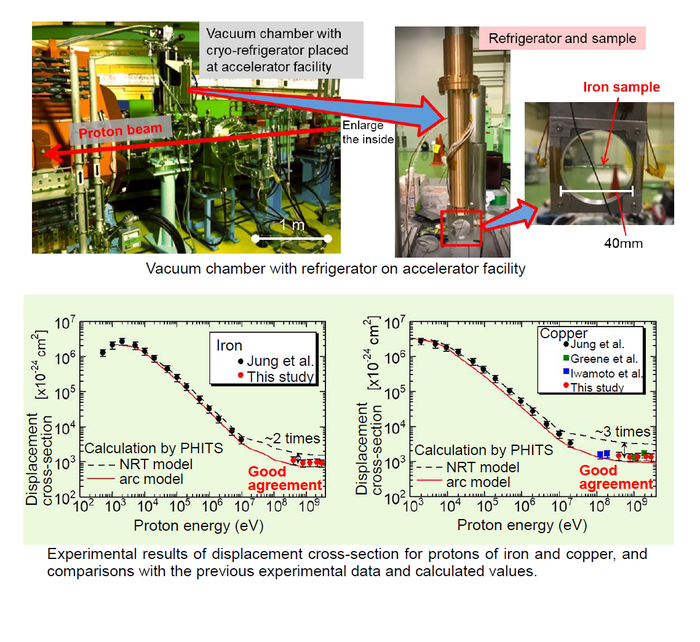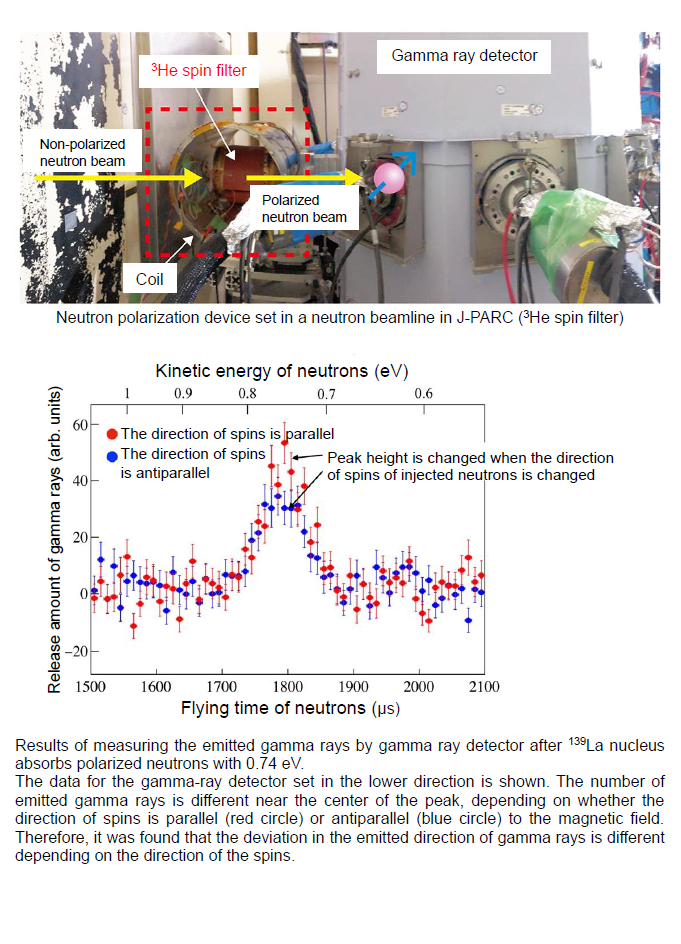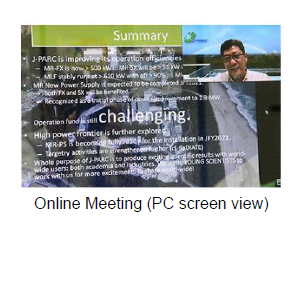J-PARC News July 2020 (Issue #183)
■ Toyota Group and J-PARC Collaborative Special Lecture Held Online (June 30, J-PARC Research Building) - Use of neutron beam to develop hydrogen fuel cells –
J-PARC and Toyota Group have advanced comprehensive collaborative research including research which uses neutrons at J-PARC as a part of the development of hydrogen energy related to taking measures against global warming. This time, Yoshihiko Hamamura, Senior General Manager of Fuel Cell Business Field (FC-Cubic※ Chairman), Chika Kako, Senior General Manager of Material Technology Field from Toyota Motor Corporation, and Takashi Shimazu, Director of Toyota Central R&D Labs., Inc., and other responsible persons who develop Fuel Cells visited J-PARC. They exchanged information on the development of FC technology using neutrons. In the opening address, Senior General Manager Yoshihiko Hamamura introduced the long-term efforts by Toyota Motor Corporation, titled "Potential of Industry-Academia Collaboration in Development of Fuel Cell". Next, Toshiya Otomo, Head of the Materials & Life Science Division, explained the summary of J-PARC and use of neutrons, and a person in charge of the experiment explained the neutron instrument. Subsequently, J-PARC Center Special Lecture was held online for collaboration. Kohei Yoshida, General Manager of FC Fundamental Development Division, Toyota Motor Corporation, delivered a speech titled "Desire for the Development of Fuel Cell System", about specific issues of fuel cells such as the improvement of durability and lower cost, and the potential application as a power supply system in response to power failure during a disaster. In addition, Kazuki Amemiya, General Manager of FC-Cubic, introduced his expectation for solving issues in research and development with the title "Potential of Neutron Analysis Technology in NEDO Hydrogen Project". In the last meeting, future progressive cooperation was also confirmed.
※Technology research association composed of 14 Japanese companies like Toyota Motor Corporation and others.
■ Arrangement on Research Cooperation between JAEA and Karlsruhe Institute of Technology in the field of ADS Development (June 18)
JAEA and Karlsruhe Institute of Technology (KIT) in Germany concluded the arrangement on research cooperation in the field of Accelerator Driven nuclear transmutation System (ADS) development. In the ADS under research and development by JAEA, the liquid metal alloy of lead and bismuth is to be used as both the target material for generating neutrons and the coolant. The lead-bismuth alloy is also to be used as the target material in the J-PARC’s experimental facility for nuclear transmutation research. Meanwhile, KIT has a long history and many achievements in research and development on the liquid metal technology. Going forward, this arrangement allows both institutes for mutual cooperation to use their equipment, and to exchange personnel and information mainly in the field of lead-bismuth technology.
■ How much Is Metal Damaged in Exposure to High-Intensity Proton Beam? - Contribution to safety of accelerator driven system using high-intensity proton beam – (July 1, Press Release)
When high-intensity protons inject into the materials utilized as a beam window and target in the accelerator facilities such as J-PARC, "displacement damage" takes place. Due to the displacement damage, atoms of the metals displace the position in the lattice and consequently deteriorates the material strength. The displacement damage of materials is usually estimated by the index of displacement per atom (dpa). The dpa is given by the fluence of the beam multiplied by the frequency of displacement, which is the displacement cross-section. Experimental data of the cross-section was scarce, which made it difficult to validate the calculation model for the estimation of the displacement.
Based on Matthiessen's rule, the displacement damage is proportional to the electrical resistance of metal samples irradiated by proton beams. A method for experimentally obtaining the displacement cross-section has been developed in recent years. The cryogenic temperature of -269 ℃ is, however, essential for accurate measurement to avoid relaxation of damage due to the thermal motion of the atom. Shin-ichiro Meigo, JAEA Senior Principal Researcher, and others in J-PARC Center employed a small helium refrigerator to enable the measurement in an accelerator facility with the spatial constraint where it is difficult to place a large refrigerator. By using a proton beam with the kinetic energy of 400 MeV ~ 3 GeV, which is accelerated by Rapid Cycling Synchrotron (RCS) of J-PARC, displacement cross-sections of iron and copper were measured, which are used as materials such as beam window. The experimental cross-sections were compared with values by calculation results. Calculated results by the Norgett−Robinson−Torrens (NRT) model, which has generally been employed to estimate the dpa, showed overestimation by a factor of 2 ~ 3 of the experimental results. The recent progressed calculation model with the athermal recombination collection (arc) based on the Molecular Dynamics simulation showed good agreement with the experiment. Going forward, the arc model will accurately estimate the damage not only for Accelerator Driven System (ADS), but also for materials used in high-energy accelerator facility such as stainless steel containers of mercury target used as the Spallation Neutron Source of J-PARC.
■ Approaching Mysteries of the Universe with Neutrons - Approaching enhancement phenomenon of the symmetry violation in nuclei with high-intensity polarized epithermal neutrons – (July 15, Press Release)
Why do only particles remain in particles and anti-particles which were considered to be created in equal numbers at the birth of the universe? The key to solving this mystery is the difference in the properties of particles and anti-particles (CP violation). The reaction where a nucleus absorbs a neutron indicates that extremely small CP violation in the reaction between nucleons (proton and neutron) is largely enhanced in the neutron absorption reaction. It is considered to be used to sensitively search CP violation. So, Tomoki Yamamoto, a graduate student at Nagoya University, and others measured the intensity of gamma rays emitted in neutron absorption reaction by 139La nucleus with the Accurate Neutron-Nucleus Reaction measurement Instrument (ANNRI) of J-PARC in order to accurately understand and verify the enhancement mechanism of CP violation in atomic nuclei. As a result, it was discovered for the first time in the world that when neutrons with uniform spin orientation (polarized) were absorbed at 0.74 eV, there was a deviation in the emitted direction of gamma-rays, and the defiation varies depending on the direction of neutron spin. The comparison with the experimental result and the model calculation enable verification of the validity of the model. It is expected that the enhancement mechanism of CP violation in nuclei can be understood.
Meanwhile, as a neutron polarization device for high energy like 1 eV which is a key to the success of this experiment, a compact 3He spin filter with polarized 3He gas was developed. The research group devised a coil holding the polarization of 3He and a magnetic shield to make a polarizing device more compact and introduce the device into the neutron beamline. It is the first time in the world to generate a polarized neutron beam with this energy and high intensity, which led to this research achievement. Going forward, this polarized neutron generator that was newly developed is expected to additionally create research achievements in various fields such as condensed matter physics and engineering.
■ Safety and Health Liaison Meeting with J-PARC Contractors Held Online (June 30)
"Safety and Health Liaison Meeting with J-PARC Contractors" was held on June 30. This liaison meeting is held every year prior to the summer maintenance period to share safety awareness among J-PARC staff members and the contractors who are engaged in operation or work at J-PARC facilities. This year, it was held as an online meeting with a web conference system to prevent the spread of the novel coronavirus infections. 46 contractors and J-PARC staff members took part in the meeting. In order to share each other's understanding, questions and answers about key points of the work under the unprecedented situation, where measures against heatstroke during summer work are required in addition to measures to prevent the spread of the novel coronavirus infections, were exchanged.
■ 30th J-PARC PAC Held Online (July 20 – 22)
For three days starting July 20, the J-PARC Program Advisory Committee for Nuclear and Particle Physics Experiments (J-PARC PAC) ※ was held as an online meeting with the web conference system. 7 committee members (3 from overseas) were replaced in April of this year. To begin, Katsuo Tokushuku, Director of the KEK Institute of Particle and Nuclear Studies, explained a list of proposals to be judged in this PAC meeting. Next, Naohito Saito, Director of the J-PARC Center, reported on the current situation of J-PARC, and Yoichi Sato of Accelerator Section VI reported on the current status and future operation plan of the accelerator. Subsequently, there were a total of 16 reports from experiment groups including 3 new research proposals, and progress reports on experiments currently underway in the Hadron and Neutrino Experimental Facilities along with their future plans. Advice from the committee regarding new research proposals and group reports will be compiled in the minutes and published soon.
※The committee provides advice on how to proceed with the nuclear and particle physics research programs, primarily using the main ring accelerator (MR) at J-PARC, and judges new research programs proposed as inter-university research experiments. It is composed of 16 committee members (9 from overseas) and held twice a year.
■ J-PARC Online Open House 2020
This year’s J-PARC Open House will be held on the Web around late September. For more details, please refer to the J-PARC’s Web site.




